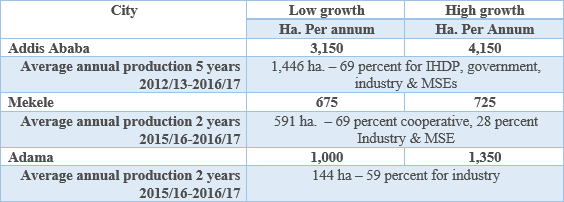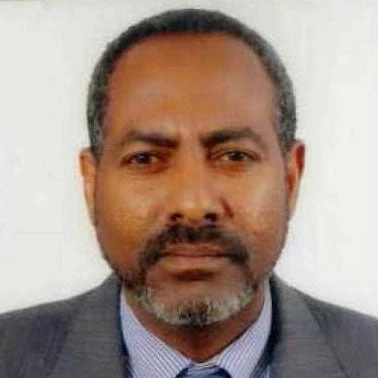Ethiopia is still predominantly a rural country, with only 20% of its population living in urban areas. But this is set to change dramatically.
Figures from the Ethiopian Central Statistics Agency, project the urban population is will triple to 42.3 million by 2037, growing at 3.8% a year. According to the 2015 Ethiopia Urbanization Review, the rate of urbanization will be even faster, at about 5.4% a year. That would mean a tripling of the urban population even earlier—by 2034, with 30% of the country’s people in urban areas by 2028.
In parallel with rapid urbanization, Ethiopia is going through a demographic transition. The labor force has doubled in the past 20 years and is projected to rise to 82 million by 2030, up from 33 million in 2005. Creating job opportunities in urban areas will be essential if Ethiopia is to exploit its demographic dividend.
Why is urbanization important? Because how Ethiopia manages its urbanization process will greatly determine if it can leverage urbanization for economic growth, improving quality of life and reducing poverty. As in other countries, urbanization in Ethiopia has been associated with high levels of economic growth, averaging 10.4% between 2003 and 2013. Cities contribute to 38% of gross domestic product (GDP) with only 15% of total workforce.
Assuming sustained high growth rates, Ethiopia could reach middle income status by 2030 (gross national income (GNI) per capita $1,560). Ethiopia has some advantages over other countries in Sub-Saharan Africa (SSA). With a GNI per capita of $723 (2017), Ethiopia is under-urbanized. By comparison, most countries in SSA reached the 40% urbanization rate with a GNI per capita of about $1,000. This should mean that Ethiopia can invest more money in its urban areas as it urbanizes.
However, there are trends that could undermine the urban transition and lock-in potential negative impacts of urbanization for decades to come if national and local leaders do not take action. Urbanization is failing to meet the demands of growing numbers of urban residents in three areas: access to jobs, infrastructure and services, and housing.
While urban unemployment and underemployment rates have recently gone down, compared to other African countries they are still high. Just to maintain the current levels of unemployment, and to reduce unemployment, Ethiopia will need to create around one million additional urban jobs per year between now and 2035.
Additionally, while the informal sector provides most employment in SSA (60%), it only accounts for 37% of jobs in Ethiopia, and manufacturing employment only accounts for 3% of total employment. Furthermore, most jobs are in small firms, that have little prospects for growth.
Ethiopia is also under-investing in its urban areas. Urban infrastructure services are essential to attract and retain satisfied and productive residents and businesses. However, urban services are failing to keep pace with urbanization. For example, Addis Ababa is Ethiopia’s only city with municipal sewerage, which serves only 10% of the population. Solid waste management remains a challenge often dumped into open areas, endangering public health. Road density is below African average, although higher in urban areas than the country as a whole, and water provision is especially a challenge, with low rates of per capita consumption. Population growth plus increasing per capita consumption would require significant increase in water supply.
Formal land supply also fails to meet demand, and informal land supply fills the gap, evidenced by mushrooming of peri-urban fragmented settlements. A current study on land and housing shows the following for three cities.
The current formal land supply, mostly through allocations, which are inefficient, discretionary and not transparent, and only some auctions (
Shortage of formal land and housing drive informal development, especially in peri-urban areas. As a result, there is a chronic housing deficit in urban areas, both for the un- housed and under-housed.
Ethiopia will need to produce nearly 400,000 new housing units per year to meet new demand. Formal housing provision, mainly through the Integrated Housing Development Program, generate 383,000 units (an average of 32,000 per year) and cooperatives, which are not meeting the growing demands. If the current rate of informality continues to 2034, there will be 33 million Ethiopians living in informal areas.
Urban financing will be central to the success of urbanization, especially for major cities and fast-growing urban towns. Without proper financing, there is a major risk that urban services will continue to be under funded and will deteriorate service quality and access even further.
Recurrent financing of on-going service delivery and maintenance of assets is proving to be a major fiscal challenge for urban centers, highlighting the need for measures to increase municipal revenues and manage costs. Financing alternatives need to be explored and weighed for their impact on fiscal risk and contribution to economic growth and social welfare. Policymakers can identify the policy trade-offs that will be required to facilitate a smooth urban transition.
While there are many specific policies that must be addressed across various sectors, research shows three policy areas as priorities: ensuring effective urban management and governance; modernizing land and planning institutions; and ensuring a sustainable financing framework for investing in urban areas.
These policies will empower urban centers to better manage, finance and develop their urban areas to become livable, equitable and productive.



Join the Conversation